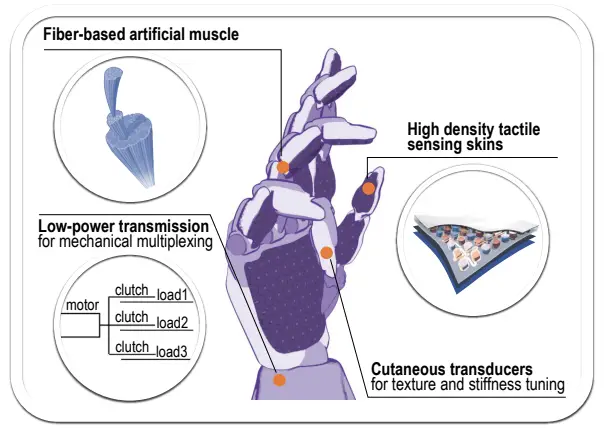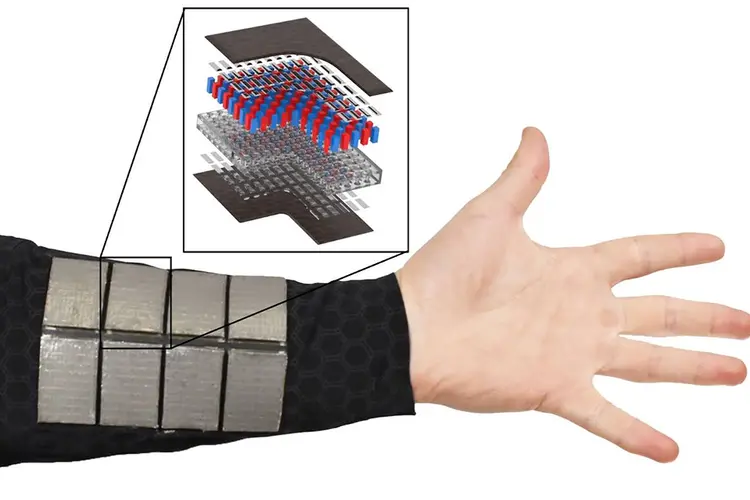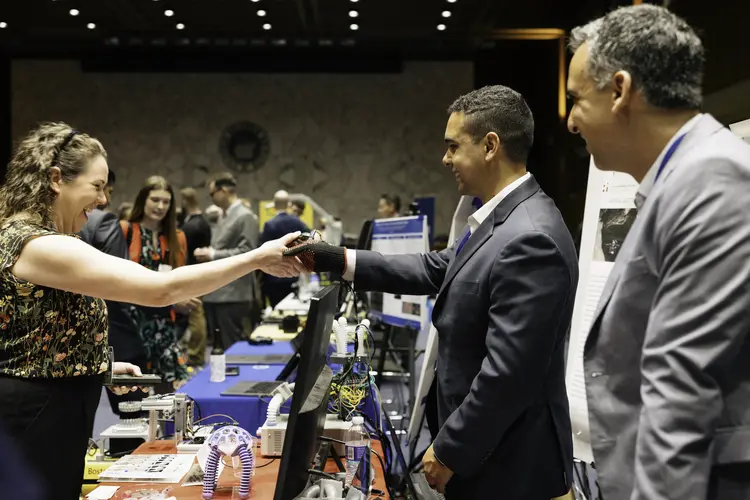
Carnegie Mellon Core Partner in New Center To Improve Robot Dexterity
New Engineering Research Center to receive up to $52 million
Media Inquiries
Carnegie Mellon University will be a core partner in a new multi-institutional collaboration that has received $26 million from the National Science Foundation (NSF) to launch an Engineering Research Center (ERC) dedicated to revolutionizing the ability of robots to amplify human labor.
Nine Carnegie Mellon University faculty members will help to develop highly dexterous robotic hands, user-friendly interfaces and accessible training materials to empower diverse workforces to implement robotic solutions quickly and reliably.
The NSF grant will fund the new center across five years, with the ability to renew for another $26 million for an additional five years. It marks the first ERC led by Northwestern University(opens in new window). Core partners include Carnegie Mellon University, Florida A&M, and Texas A&M, with additional faculty support from Syracuse University, the University of Wisconsin-Madison, and the Massachusetts Institute of Technology.
Called Human AugmentatioN via Dexterity (HAND(opens in new window)), the new ERC will build robot hands with the ability to assist humans with manufacturing, caregiving, handling precious or dangerous materials, and more. The center aims to build technological tools that are versatile and easy to integrate, creating robots capable of intelligent and versatile grasping, fine motor skills and hand-eye coordination.
An expert in softbotics(opens in new window), Carmel Majidi(opens in new window), the Clarence H. Adamson Professor of Mechanical Engineering at CMU, will lead the research thrust focused on developing robust, mass-manufacturable robot hands that achieve breakthrough capability via soft-yet-durable sensing skins, advanced actuators, and novel designs optimized for versatility and robustness.
“It’s an exciting time for softbotics,” said Majidi. “We will be solving major challenges to build the artificial muscles, responsive skin-like material and motor-powered tendons needed for user-friendly robots with dexterous capabilities to empower tomorrow’s workforce.”
This research is an extension of his 2020 moonshot project, Intelligent Symbiotic Systems, which pioneered new classes of intelligent programmable matter for transformative impacts on robotics and human-machine interactions.
“Our moonshot project was all about creating a new paradigm in bio-inspired engineering in which autonomous robotic functionality — with integrated sensing, actuation, learning, decision making, self-repair, and energy storage — is intrinsically achieved at the materials level with limited dependency on traditional motors or electronic hardware. These novel materials are critical to the development of lightweight yet mechanically robust and versatile robot hands,” said Majidi.
Other CMU collaborators include Alaine Allen(opens in new window) and Gary Fedder(opens in new window) from the College of Engineering(opens in new window); Roberta Klatzky(opens in new window) from the Department of Psychology(opens in new window) and Human Computer Interaction Institute(opens in new window); Nancy Pollard(opens in new window), Oliver Kroemer(opens in new window), and Melisa Orta Martinez(opens in new window) from the Robotics Institute(opens in new window); and Katharine Needham from the School of Computer Science(opens in new window).
The interdisciplinary team will work to ensure new robotic hands are inexpensive, easy to operate without expertise, robust, durable, and mass-manufacturable. They will help to develop and prepare a diverse workforce for an entirely new field of study focused on dexterous robots and foster a culture that nourishes inclusivity and ensures equitable access to new technologies. Potential outcomes will include increased worker productivity, improved job opportunities, reshoring of manufacturing, reduced supply chain vulnerability, enhanced food safety, improved quality of life and democratization of the benefits of robotics.
Since its founding in 1985, the ERC program has supported convergent research, education and technology translation at U.S. universities. Each ERC unites members from academia, industry and government to produce transformational engineered systems along with engineering graduates who are adept at innovation and primed for leadership in the global economy.
"NSF's Engineering Research Centers ask big questions in order to catalyze solutions with far-reaching impacts," said NSF Director Sethuraman Panchanathan. "NSF Engineering Research Centers are powerhouses of discovery and innovation, bringing America's great engineering minds to bear on our toughest challenges. By collaborating with industry and training the workforce of the future, ERCs create an innovation ecosystem that can accelerate engineering innovations, producing tremendous economic and societal benefits for the nation."



